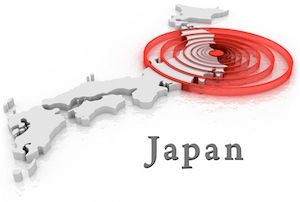Wake Up World April 25 2014
 Only about 5% of the directly discharged radiation was deposited within a radius of 80 kms (50 miles) from the Fukushima Dai-ichi nuclear power station. The rest was distributed in the Pacific Ocean. 3-D simulations have been carried out for the Pacific basin, showing that within 5–6 years, the emissions would reach the North American coastline, with uncertain consequences for food safety and health of the local population.[1][2]
Only about 5% of the directly discharged radiation was deposited within a radius of 80 kms (50 miles) from the Fukushima Dai-ichi nuclear power station. The rest was distributed in the Pacific Ocean. 3-D simulations have been carried out for the Pacific basin, showing that within 5–6 years, the emissions would reach the North American coastline, with uncertain consequences for food safety and health of the local population.[1][2]
Fukushima: Skewed Data and Vested Interests
After the Fukushima nuclear meltdowns in March of 2011, the International Physicians for the Prevention of Nuclear War (IPPNW), a global federation of doctors from over 60 countries that was awarded the Nobel Peace Prize in 1985, reviewed the conflicting literature and scientific data on Fukushima. They found that skewed data sources and vested interests made the information publicly available extremely distorted. Let’s have a look at data sources and governmental policies following the disaster:
Fukushima scientific radiation data is sourced from
– The Tokyo Electric Power Company (TEPCO), who owns the Fukushima Daiichi Nuclear Power Plant
– The International Atomic Energy Agency (IAEA), who has vested interest in nuclear energy.
